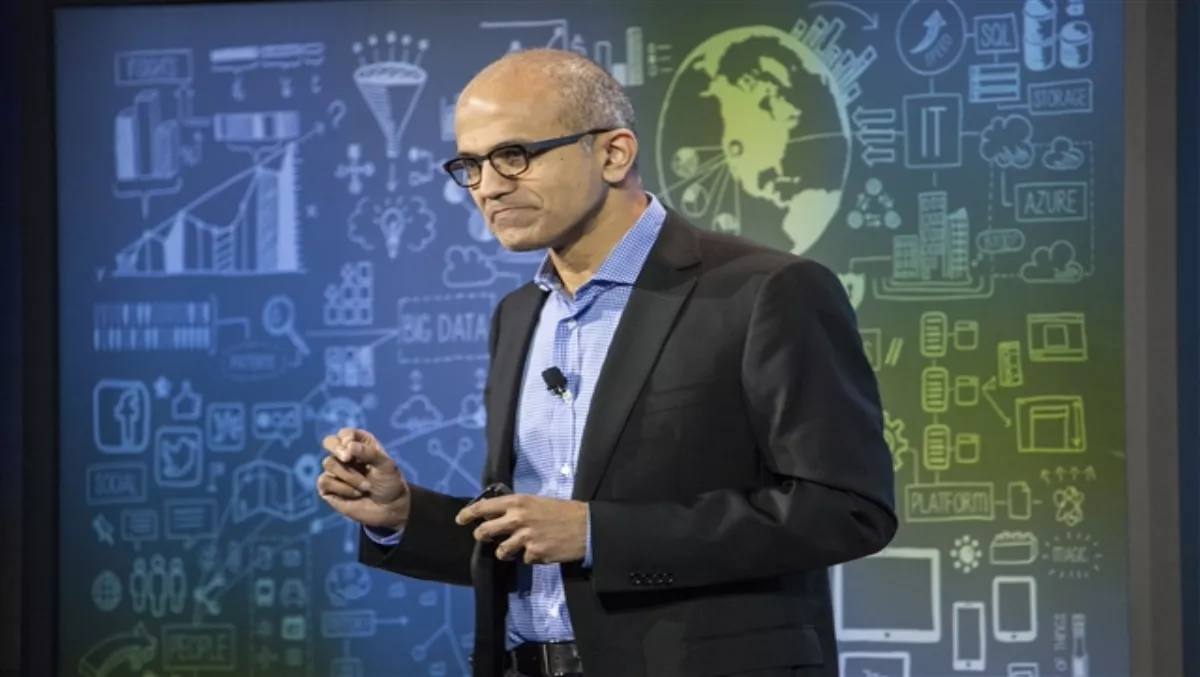
“In a mobile first, cloud first world, one of the most fascinating truths is that data is not only consumed but also generated at accelerating rates and exponentially increasing quantities.”
That was the crux of Satya Nadella’s third public appearance in as many weeks, as the Microsoft CEO continues to make his mark in Redmond.
According to Nadella, as computing becomes ubiquitous, engineers and developers are creating new form factors and cloud services that fit into all the nooks and crannies of everyday life, such as car dashboards, light switches, HVAC systems, trainers etc.
“Nearly all interactions and experiences between humans, humans and computers and between computers get digitised,” he wrote, via the company’s official blog.
“The opportunity we have in this new world is to find a way of catalysing this data exhaust from ubiquitous computing and converting it into fuel for ambient intelligence.
“This fuel will power improved experiences, understanding and interactions.
“When these devices around us gain the capacity to listen to us, respond to us, understand us and act on our behalf, we enter into an entirely new era. The era of ambient intelligence.”

After taking over the top job in February, Nadella has made it his mission to create a data culture within the company, and beyond.
“Developing the ability to convert data into the fuel for ambient intelligence is an ambitious challenge,” he added.
“It requires technology to understand context, derive intent and separate signal from noise.
“Building out a comprehensive platform that can enable this kind of ambient intelligence is a whole company initiative that we are uniquely qualified to undertake.
“SQL Server, BI, Machine learning, Bing, Azure each have a vital role to play on the road to creating a world in which our devices, services and environments truly anticipate and understand our needs.”
Despite warning that it won’t happen overnight, Nadella believes the good news is that along the way, there will be dividends that customers and partners will benefit from today.
“SQL Server gets faster, our BI more intuitive, ML smarter, Bing more useful and Azure more scalable,” he added.
“Everyone wins as we embark on this journey to creating a platform for true ambient intelligence.”
Data culture…
In the eyes of Nadella, with the right tools, insights can come from anyone, anywhere, at any time.
When that happens, organisations develop what he describes as a “data culture.”
“However, a data culture isn’t just about deploying technology alone, it’s about changing culture so that every organisation, every team and every individual is empowered to do great things because of the data at their fingertips,” he added.
“This means bringing together people, IT and developers to create a cultural shift that is just as important as systems and infrastructure.
“In a data culture, everyone benefits when more people can ask questions and get answers. In a data culture, the entire effectiveness of an organisation can elevate.
“This is especially true when every employee can harness the power of data once only reserved for data scientists and tap into the power of natural language, self-service business insights and visualisation capabilities that work inside familiar apps such as Office.”
Nadella talked about Microsoft’s ambition to enable a data culture for everyone and how the company’s current data platform across Office 365, Azure and SQL Server is bolstered with the announcements made this week:
· SQL Server 2014:
This release completely brings in-memory capability to all workload – OLTP, Data Warehousing and Business Intelligence.
· Analytics Platform System (APS):
APS combines the best of Microsoft’s SQL Server database and Hadoop technology in one low-cost offering that delivers “big data in a box.”
· Azure Intelligent Systems Service:
A cloud-based service to connect, manage, capture and transform machine-generated data regardless of the operating system or platform. This is our Internet of Things cloud service that goes into limited beta today.
“Today marks a big step toward, and we’re going to keep moving quickly,” he concluded.